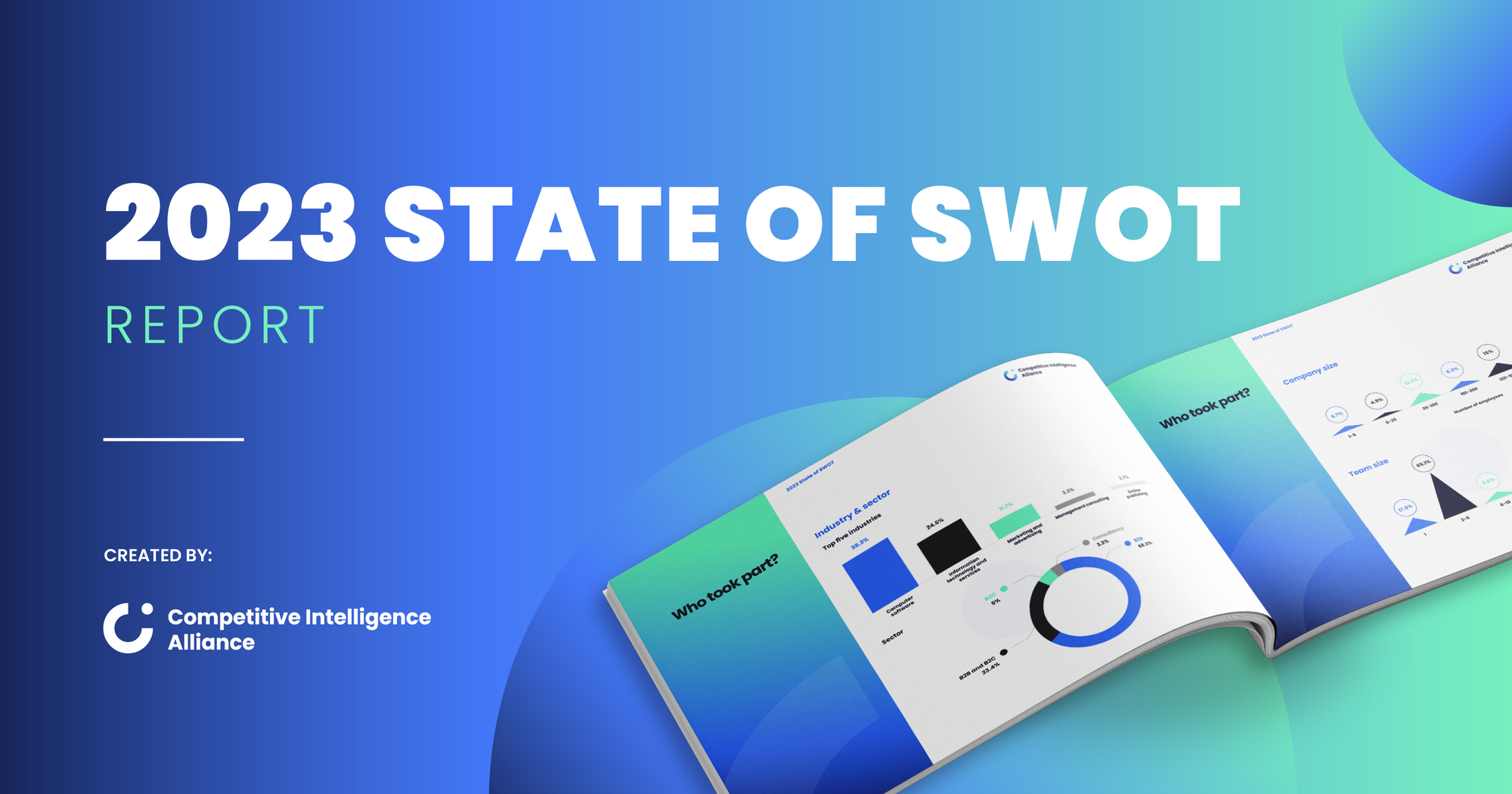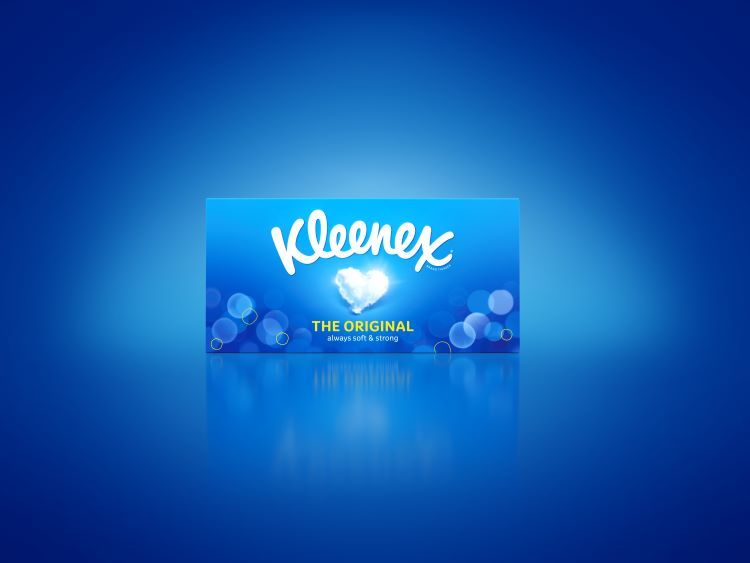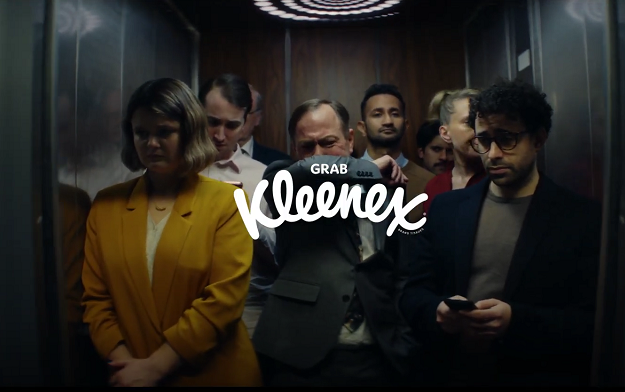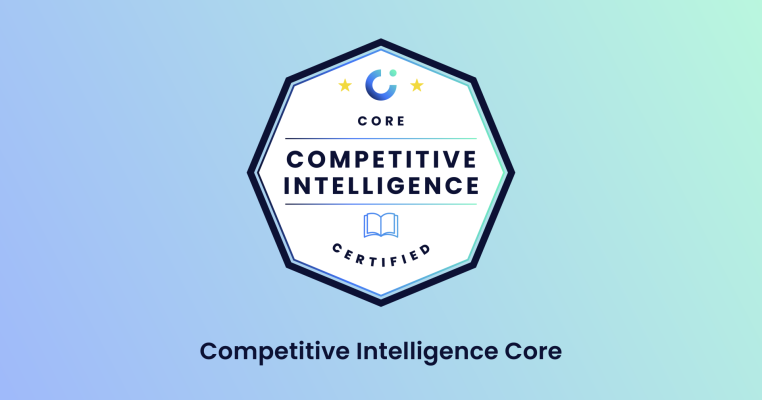What is the VRIO framework?
The VRIO framework is a strategic analysis tool focused on helping a business find potential sources of competitive advantage. VRIO looks at a firm’s internal capabilities and resources, so differs from other strategic analysis frameworks like PESTLE analysis that examine external market factors.
VRIO stands for:
- Valuable.
- Rare.
- Inimitable.
- Organized.
In a VRIO analysis, you’ll examine your business’ core competencies, internal resources and capabilities, and grade them against each of these four attributes.
You want to identify resources that (i) have real value; (ii) no, or few, competitors have; (iii) are difficult or costly to imitate; (iv) you have processes in place to exploit.
Examples of resources or capabilities:
We’ve been talking about ‘resources and capabilities’. But what could these be? They’re typically the result of repeated investment over time.
Here’s a short list of possible candidates:
- In-house expertise.
- Physical assets.
- Raw materials for production and manufacturing.
- Infrastructure or technology (hardware or software).
- Large proprietary data stores.
- Strong brand equity and/or customer loyalty.
- Particular product features*.
Now we’re familiar with some of the resources we’re interested in, let’s examine each facet of the framework in some more detail:
Value, rarity, inimitability, and organization
Value
First, does the resource you’re examining have real value?
If it doesn’t, it’s not a great candidate for a source of competitive advantage (CA).
You’ll also want to consider valuable resources your competitors have that you don’t.
Where this is the case, you’re considered to be at a competitive disadvantage. This is something you may (or may not) want to rectify, depending on your competitive strategy and the threat you feel it poses to your firm.
Rarity
So, where you’re confident you have capabilities or resources that are valuable, the next item up for consideration is their rarity.
If what you have is valuable, but it’s found everywhere, then it’s far from unique to you. If your product has a valuable integration with a popular CRM, for example, but every one of your competitors offers the same thing, it’s not rare.
If your resource is valuable, but not rare, you’re said to be at competitive parity, and are on equal footing with your competitors.

Inimitability (resistance to duplication by competitors)
But what if your feature of value is rare? If you’re one of the few (or the only one) with a valuable resource or capability, you have a CA. But for how long?
That depends on how difficult it is for your competitors to copy whatever is giving you your advantage. If that’s a large pool of customer data, for example, they’d have to spend the time collating a similar pool of data to duplicate your advantage.
Would that be expensive? Would it be time-consuming?
If it would, you have an advantage it’ll be difficult for your competitors to duplicate. If it’s not, you have a temporary competitive advantage, since it’s only a matter of time before your competitors close the gap.
Organization
Right, so you’ve checked all the boxes so far. You have a valuable resource that few competitors have. It’d be prohibitively expensive for them to duplicate that resource.
You have an advantage. But unless you have processes in place to systematically extract as much profit and value out of this advantage as you possibly can, you’re letting your advantage go to waste. When this applies, you’re said to have an unused competitive advantage.
Create sensible processes for extracting value, however, and you’ve got a sustained competitive advantage.
Sustained competitive advantage
All businesses want one or more sustained, or sustainable competitive advantages. Such advantages persist over time. So long as a firm can defend them, they can feasibly last indefinitely (though that’s unlikely).
Temporary competitive advantages, by contrast, have a shelf life. That’s because, according to the VRIO framework, it’s not prohibitively difficult for competitors to see your advantage and reverse engineer it, closing the gap and eventually drawing all vendors in a space towards competitive parity.

How to use the VRIO framework effectively
The aim of a VRIO analysis is to uncover sources of sustained competitive advantage.
While you might also uncover existing temporary CAs while performing a VRIO analysis, sustained advantages are generally considered more valuable to businesses. After all, as per the VRIO framework itself, they’re advantages that are difficult for competitors to imitate, and that your firm has established processes and systems to exploit maximally.
Here’s a process for using the VRIO framework more effectively:
- Identify existing advantages and disadvantages.
- Identify the types of advantage you have on your hands.
- Figure out which advantages you can progress through the framework with little work.
- Prioritize your choices based on business value.
- Put your plan into action.
1. Identify existing advantages and disadvantages
The first thing to do is to figure out where you’re at.
This means a few things.
First, identify any competitive disadvantages according to the framework (resources and capabilities that lack value relative to those of the competition).
For example, you might learn that, while many competing firms have access to advanced technologies, you do not. You lack a valuable resource, and so are at a competitive disadvantage with this particular resource. You’d want to note that down.
Next, you’ll also need to identify which of your resources and capabilities constitute competitive advantages relative to the competition, and where they exist within the VRIO structure itself.
Which brings us to the next step…
2. Identify the type of advantage you have on your hands.
Once you have a list of valuable resources, you need to start bucketing them into types of CAs according to VRIO.
For example, you might have access to strong brand equity and customer loyalty. These are valuable resources. Do your competitors also have strong brand equity? Or is this rare in your space? If it’s rare, are you taking full advantage of it? If not, you might have an unused CA on your hands.
Map your resources and capabilities (or lack thereof) according to the structure the VRIO framework provides.

3. Identify which advantages you can advance through the framework
The key is to find the advantages that, with a bit of work, you can move through the framework. It makes most sense to start at the end, with your unused CAs.
So look at your unused CAs, that is, the resources and capabilities you have that are valuable, rare, and hard to imitate, but that you’re not making best use of currently.
Which of these can you make better use of? What systems or processes can you set up to better exploit these advantages?
Do the same for advantages at other stages of the framework
Where you have temporary CAs (valuable and rare resources that are not too difficult for competitors to duplicate), can you make it harder for competitors to imitate or duplicate?
One way of making duplication harder is to establish barriers to entry for your competitors. For example, you could file trademarks and patents to protect your intellectual property.
Examples of possible barriers to entry
Here’s a list of possible barriers to entry you could try creating that’d possibly convert your temporary competitive advantages into sustained ones:
- Brand equity.
- Customer loyalty.
- Favorable long-term contracts and agreements with suppliers.
- Geographical advantages.
- Economies of scale.
- Long-term customer contracts with early-exit fees.
- Product patents and trademarks.
It’s also worth noting that firms won’t be able to create or influence all barriers to entry, but that doesn’t stop these barriers to entry from making a sustained CA out of an otherwise temporary one. Legislative barriers and steep startup costs can make it prohibitively difficult for new competitors to enter the field, for example.
However, you can probably correct at least a few of your competitive disadvantages to take you to competitive parity with your rivals with some intelligent investment.
4. Prioritize your choices based on business value
Having completed the prior steps, you’ll probably be left with options in a few different categories:
- Competitive disadvantages to rectify with investment (e.g. infrastructure or technological disadvantages.)
- Unused CAs to more effectively exploit (e.g. by creating better systems and processes for extracting value and profit from them.)
- Temporary advantages to make more sustainable (e.g. by making it harder for new entrants to compete.)
Not every category, and not every item in each category, will warrant the same attention, however. Some will offer greater rewards for less work, or less risk.
For example, making it harder for competitors to duplicate certain advantages you have might be an incredibly costly exercise, while filing a patent might be relatively cheap and straightforward, depending on your industry.
And even the cheapest and simplest fix for a temporary CA might pale besides how easy it is for you to correct for an unused CA. This might only require a new question to be added to a CRM workflow. Or a new, reusable project template to be created in your project management software.
It's not one size fits all
The answers for every business will be different. But it’s up to you to prioritize the fixes you can make, and to come up with a shortlist of the fixes you will make, which could look like this:
- Investment to fix a competitive disadvantage and bring you up to parity with your rivals.
- A pledge to negotiate more advantageous contracts with suppliers.
- A new internal process to better exploit your business’ strong intellectual capital and its strong customer loyalty.
Decide on an order for your fixes, put your plan into action, and reap the rewards.
Follow the above process to perform a VRIO analysis effectively. But to do strategic planning effectively, you’ll want to adjust for some of VRIO’s limitations (discussed below).
What is the difference between SWOT analysis and the VRIO framework?
SWOT analysis has you examine your business’ internal Strengths and Weaknesses, as well as the external Opportunities and Threats offered and posed by the market.
SWOT aims to help you understand where your business is at right now, and what strategic decisions you need to make to stand the best chance of improving your competitive market position.
There are various methods for doing this, like matching your firm’s strengths with your market opportunities, and your weaknesses with market threats. This might show you market opportunities you’re uniquely placed to exploit, or where you’re most at risk of losing market share to certain competitors. From there, you can determine appropriate actions to take to maximize your competitiveness over time.
The VRIO framework, on the other hand, aims to help you establish which resources and capabilities your firm possesses that constitute possible competitive advantages.
While SWOT has you look both internally and externally, VRIO is a more strictly internal analysis, concerned with factors internal to your business.

State of SWOT Report
Download your copy to learn...
- The five top challenges you face performing SWOT, and how to solve them.
- The best ways to measure success or failure post-SWOT.
- Whether SWOT is falling out of favor in modern businesses.
- The best alternative frameworks and how they compare with SWOT.
- The future of SWOT analysis.
Why use the VRIO framework? VRIO framework benefits
1. Identify new internal sources of competitive advantage.
It’s of huge benefit to a business to discover it has a valuable resource or capability it stands to profit from.
The VRIO framework helps you identify internal sources of CA, and to determine whether you’re exploiting them sufficiently.
For example, you might have begun investing in a particular new solution or technology (like AI), only for your time and financial investments to fall by the wayside in favor of other projects.
Discovering these half-built, potential sources of CAs, and scrutinizing them under the VRIO framework, can give you the boost you need to finish building out these technologies into full-blown competitive advantages.
2. Inform strategic planning decisions
The VRIO framework can help your firm’s strategic planning, too.
For example, if you find that many of your business’ resources and capabilities constitute only temporary CAs, then it makes sense to take steps to make it harder for competitors to duplicate those advantages.
Such information can inform your business’ larger strategic vision, and shape the decisions leaders make regarding its future.
3. Identify underutilized advantages.
The VRIO framework might also show where you’re not taking full advantage of your CAs.
It’s possible your firm possesses resources or capabilities that are Valuable, Rare, and Inimitable, but you don’t have processes or systems in place to capture the additional profits they make possible. This can be easy to rectify, lending you a new advantage at little cost.
Limitations of the VRIO framework
While the VRIO framework can help organizations uncover their potential, it’s not a silver bullet. It’s not a comprehensive framework. Nor is it a sure thing that it’ll be suitable for your business.
1. It’s not comprehensive
If you’re looking for a comprehensive business analysis framework, VRIO ain’t it. It focuses solely on internal factors. Realistically, a combination of frameworks, like VRIO, SWOT, and PESTLE analysis, will offer the most comprehensive strategic overview of your business.
2. It might not suit small businesses
Resources and capabilities that stand as strong candidates for competitive advantage usually rise out of repeated investment over time. Younger businesses at early growth stages may not have had time yet to invest in these possible sources of competitive advantage. For these businesses, the framework may not offer any value until a later date.
3. It’s not forward-thinking
You’ve heard it before: markets are more competitive than ever. Technologies are more disruptive than ever.
So how is it helpful to apply a static strategic planning framework, that only takes into account your existing capabilities and resources, to your business? After all, this time next year, new powerful resources could be demanding your attention and disrupting your plans.
VRIO analysis doesn’t necessarily take these future resources into account.
Example of VRIO analysis: Kleenex
Kleenex is a brand with strong brand equity. After all, when you think “tissue”, you think Kleenex.
The brand has become synonymous with the product. If someone wants a box of tissues, and asks you to pick up a box of Kleenex while you’re at the store, what are you likely to come back with?
Competitors have to go up against that.

Here’s an example of a VRIO analysis examining Kleenex’s brand equity as the resource in question.
Valuable:
Having strong brand equity is valuable.
Customers are much more likely to buy from brands they recognize. Recognition breeds trust, an all-important factor when it comes to anyone parting with their hard-earned cash.
Strong brand equity increases perceived value. It allows businesses to increase their prices without losing market share. It attracts talent to the business, and can feed into the creation of further CAs.
Rare:
Name a tissue brand that’s not Kleenex.
We’ll wait.
Sure, they exist. You’d even buy them if they presented you a good enough deal. But that doesn’t mean they enjoy anything close to Kleenex’s level of brand equity.
So… rare? We think so.

Inimitable:
The difficulty with duplicating Kleenex’s brand equity is that they haven’t sat on their laurels. Any new or existing brand that wants to start competing with Kleenex’s brand presence also needs to go up against Kleenex’s (probably much) deeper pockets.
And with a product as simple as this, there’s arguably not that much space for another household name brand in the market.
Organized:
Kleenex has continued to invest in, and exploit, its brand equity. They’ve poured additional products into undifferentiated marketing strategies (mass marketing) and nationwide ad campaigns.
Kleenex is a company that knows the strength of its position, and it’s willing to lean into it.
As a resource that’s valuable, rare, inimitable, and organized, Kleenex’s strong brand equity gives it a strong, sustainable competitive advantage.
Give yourself an unfair advantage
Our newest competitive intelligence course lifts the lid on the frameworks and processes experts use to deliver impactful intel with confidence.
You can expect:
- A 100% self-paced and online course packed with competitive wisdom so you can stop worrying and start winning.
- Bonus features from established competitive professionals to give you an unfair advantage.
- 6 downloadable, customizable templates and frameworks that make analysis a cinch.

Competitive Intelligence: Core
We'll show you how to:
- 👑 Lead development of your org’s all-important competitive positioning.
- 🦾 Master CI’s essentials, including its most powerful research techniques.
- 🚀 Arm sales and customer success with intel to skyrocket win rates and turn down churn.
- 🧠 Offer leaders critical intel that informs their decision-making and strategy.
- 📈 Elevate CI’s role within your org to ensure career progression.





.png?v=4917c1c27c)